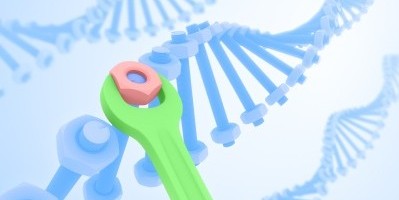DNA repair enzymes protect the genome from mutations that can lead to disease. Repair enzymes called DNA glycosylases were recently found to repair DNA interstrand cross-links (ICLs), highly toxic lesions formed by toxins and chemotherapeutic agents.
To explore the mechanism for DNA glycosylase-catalyzed ICL removal, Brandt Eichman, Ph.D., and colleagues solved the X-ray crystal structure of AlkZ, a bacterial DNA glycosylase that removes ICLs formed by the potent antimicrobial and antitumor agent azinomycin B.
They found that the structure – the first for a glycosylase like AlkZ – contains a unique protein fold, which appears to be prevalent in pathogenic bacteria. The researchers used mutational analysis to define key features of the catalytic mechanism, and they developed a molecular model showing how the enzyme can “unhook” either side of an ICL.
The findings, reported in the Proceedings of the National Academy of Sciences, shed light on fundamental mechanisms of DNA repair, which have implications for cancer therapeutics and bacteria-host pathogenesis.
This research was funded by the National Science Foundation and the National Institutes of Health (grants ES019625, RR026915).
Send suggestions for articles to highlight in Aliquots and any other feedback about the column to aliquots@vanderbilt.edu














